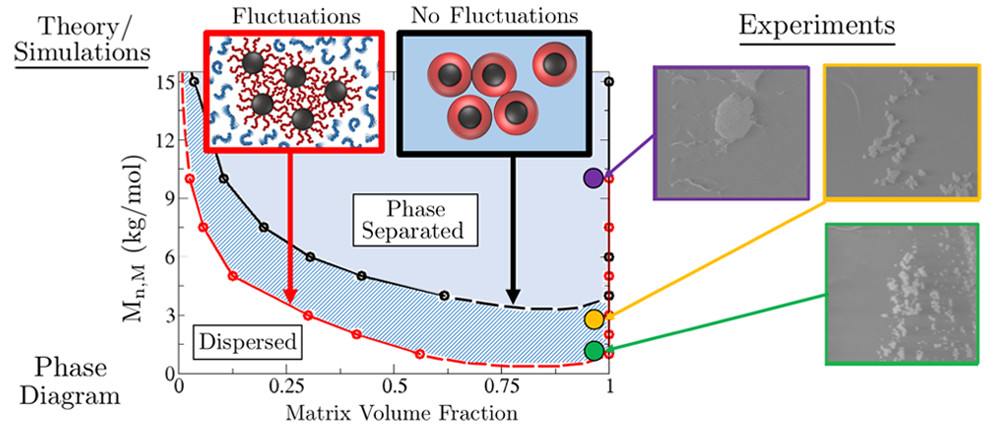Abstract
There are limited theoretically predicted phase diagrams for polymer nanocomposites (PNCs) because conventional modeling techniques are largely unable to predict the macroscale phase behavior of PNCs. Here, we show that recent field-based methods, including PNC field theory (PNC-FT) and theoretically informed Langevin dynamics, can be used to calculate phase diagrams for polymer-grafted nanoparticles (gNPs) incorporated into a polymer matrix. We calculate binodals for the transition from the miscible, dispersed phase to the macrophase separated state as functions of important experimental parameters, including the ratio of the matrix chain degree of polymerization ( \(P\) ) to the grafted chain degree of polymerization ( \(N\) ), the enthalpic repulsion between the matrix and grafted chains, the grafting density ( \(σ\) ), the size of the NPs, and the NP volume fraction. We demonstrate that thermal and polymer conformational fluctuations enhance the degree of phase separation in gNP-PNCs, a result of depletion interaction effects. We support this conclusion by experimentally investigating the phase separation of poly(methyl methacrylate)-grafted silica NPs in a polystyrene matrix as a function of \(P/N\). The simulations only agree with experiments when fluctuations are included because fluctuations are needed to properly capture the depletion interactions between the gNPs. We clarify the role of conformational entropy in driving depletion interactions in PNCs and suggest that inconsistencies in the literature may be due to polymer chain length effects since conformational entropy increases with increasing chain length.
